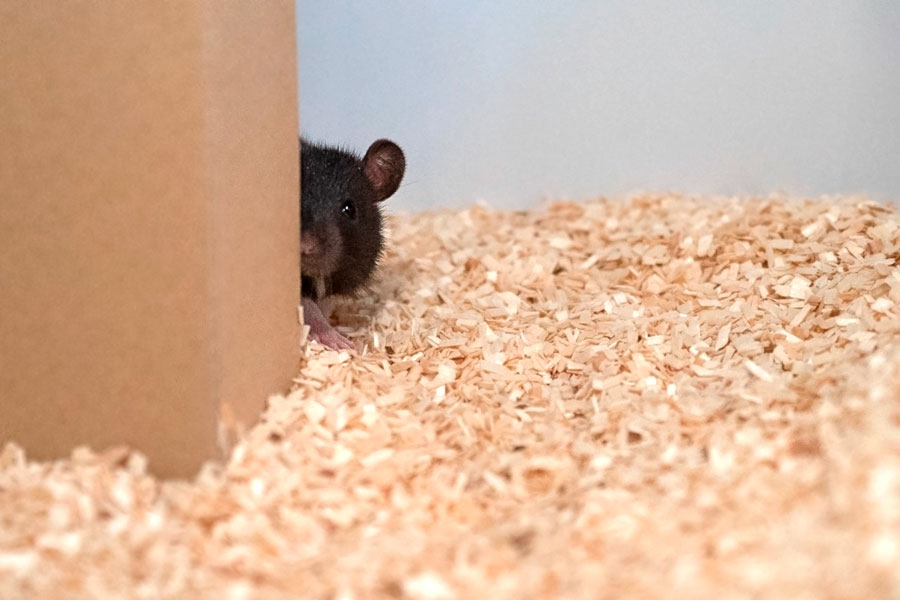Rats play hide and seek
All around the world children play hide and seek. But do animals do so too? In a recent study, scientists from the Bernstein Center Computational Neuroscience (BCCN) Berlin and the Humboldt University Berlin show that rats can quickly learn a rat-human version of the game and can easily switch between different roles – hiding and searching. The scientists suspect that hide and seek has its origins much earlier in evolution than previously thought.

A rat playing hide and seek © K. Hartmann
/HUB/ “Many pet owners report that their animals like to play hide and seek, but this has not been analyzed systematically so far,” explains Michael Brecht of the BCCN Berlin and Humboldt University Berlin, who is also lead author of the study. To understand this phenomenon in more detail, Brecht and his colleagues trained rats to play hide and seek in the laboratory. In one version of the game, an experimenter placed the rat in a box, closed the lid, and hid. When he then remotely opened the box, the rat began to search. Once it had found the researcher, it was tickled as a reward. Rats enjoy this social interaction immensely. In another version of the game, the rat was also placed in the box, but the lid remained open, indicating to the rat that it was assigned to play the role of the hider. Again, the rat was tickled playfully as soon as it was found. The animals quickly learned the game and developed sophisticated strategies for both hiding and searching.
“Play is an end in itself – kids play for the sake of playing and not to reach any specific goal,” says Brecht. Although the animals were rewarded with tickling at the end of each trial, there is evidence that they, too, were not just playing for the reward. Essentially, the rats seemed to enjoy the game. They squealed with joy, especially when they found the experimenter. In contrast, they were very quiet when hiding. They carefully chose their hiding places, and when they were found they often went re-hiding. “That is cheating a little, of course, but it shows that the rats strive to extend the game, even though it postpones the reward,” says Brecht.
To address what is going on the rat’s mind, the scientists studied the neural activity in the prefrontal cortex of the animals during play. They showed that several cells in this highly developed brain region responded specifically to certain game-related events, such as closing the box as an indicator of role assignment as the seeker. “This suggests that the rats understand the rules of the game,” explains Brecht.
It is well known that animals play in the wild as well. They chase each other and engage in play fights, readily adopting different roles. Whether they actually play hide in nature to take turns in seeking each other has not yet been investigated. However, Brecht considers it possible. “Rats learned this complex behavior so quickly in our study that we think they somehow have it in them,” he says. Both the ability to hide well and to search effectively are essential for survival in the wild. “We assume that rats are so good at playing hide and seek because they use the game to practice an evolutionary-relevant behavior,” says Brecht.
Developing good hide and seek strategies requires cognitive abilities such as perspective taking at least to some extent. Where will the playmate most likely search? Which hiding places work best? So far, scientists have primarily attributed such capacities to primates. “Our experimental paradigm can be used to investigate whether, and to which extent, rats have this ability too,” says Brecht. (Text: Katrin Weigmann)
Original publication
Annika Stefanie Reinhold, Juan Ignacio Sanguinetti-Scheck, Konstantin Hartmann, & Michael Brecht (2019): Behavioral and Neural Correlates of Hide and Seek in Rats, Science. 365, 6458, 1180-1183. doi: 10.1126/science.aax4705




